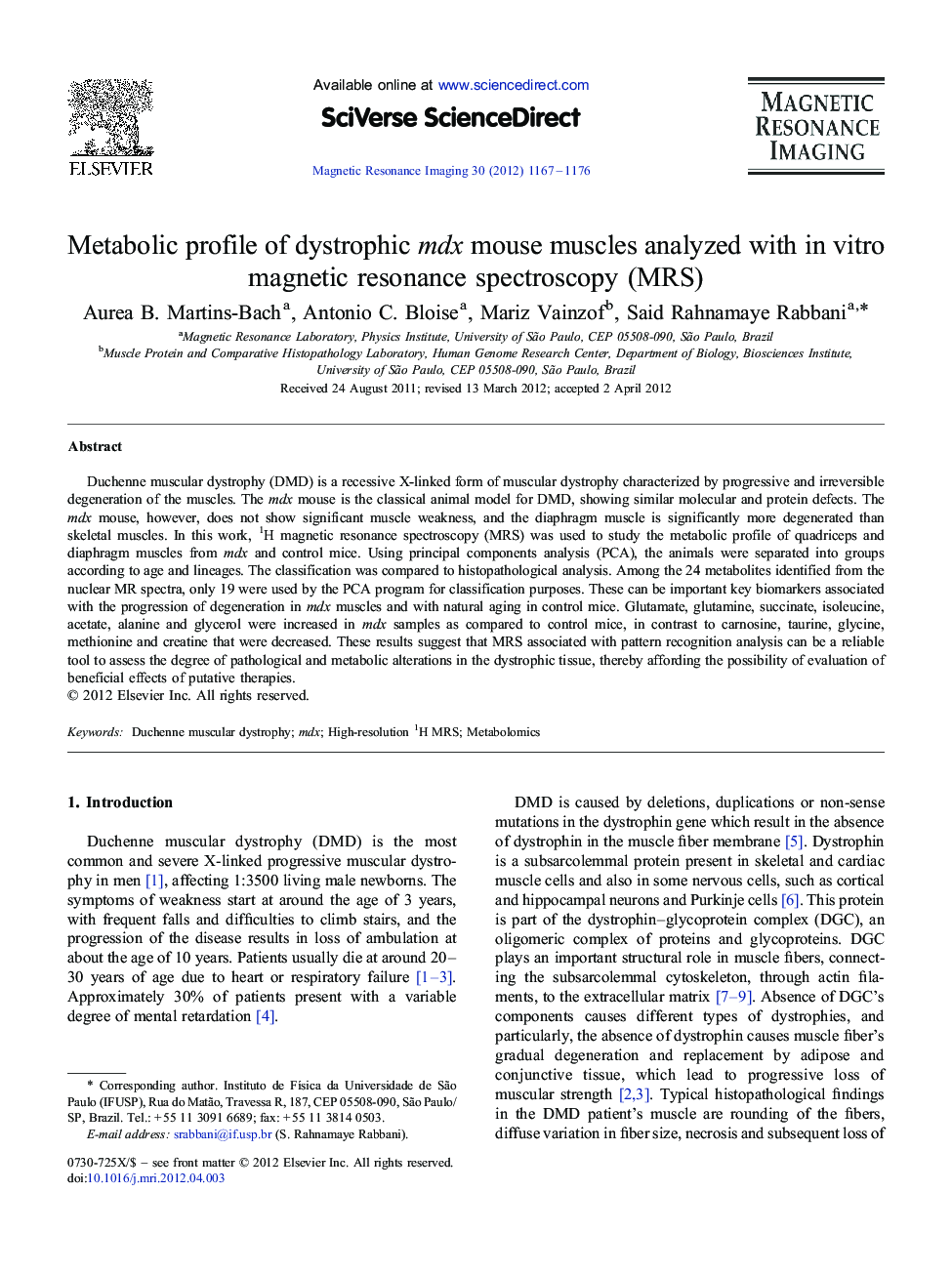| Article ID | Journal | Published Year | Pages | File Type |
|---|---|---|---|---|
| 10712709 | Magnetic Resonance Imaging | 2012 | 10 Pages |
Abstract
Duchenne muscular dystrophy (DMD) is a recessive X-linked form of muscular dystrophy characterized by progressive and irreversible degeneration of the muscles. The mdx mouse is the classical animal model for DMD, showing similar molecular and protein defects. The mdx mouse, however, does not show significant muscle weakness, and the diaphragm muscle is significantly more degenerated than skeletal muscles. In this work, 1H magnetic resonance spectroscopy (MRS) was used to study the metabolic profile of quadriceps and diaphragm muscles from mdx and control mice. Using principal components analysis (PCA), the animals were separated into groups according to age and lineages. The classification was compared to histopathological analysis. Among the 24 metabolites identified from the nuclear MR spectra, only 19 were used by the PCA program for classification purposes. These can be important key biomarkers associated with the progression of degeneration in mdx muscles and with natural aging in control mice. Glutamate, glutamine, succinate, isoleucine, acetate, alanine and glycerol were increased in mdx samples as compared to control mice, in contrast to carnosine, taurine, glycine, methionine and creatine that were decreased. These results suggest that MRS associated with pattern recognition analysis can be a reliable tool to assess the degree of pathological and metabolic alterations in the dystrophic tissue, thereby affording the possibility of evaluation of beneficial effects of putative therapies.
Related Topics
Physical Sciences and Engineering
Physics and Astronomy
Condensed Matter Physics
Authors
Aurea B. Martins-Bach, Antonio C. Bloise, Mariz Vainzof, Said Rahnamaye Rabbani,
